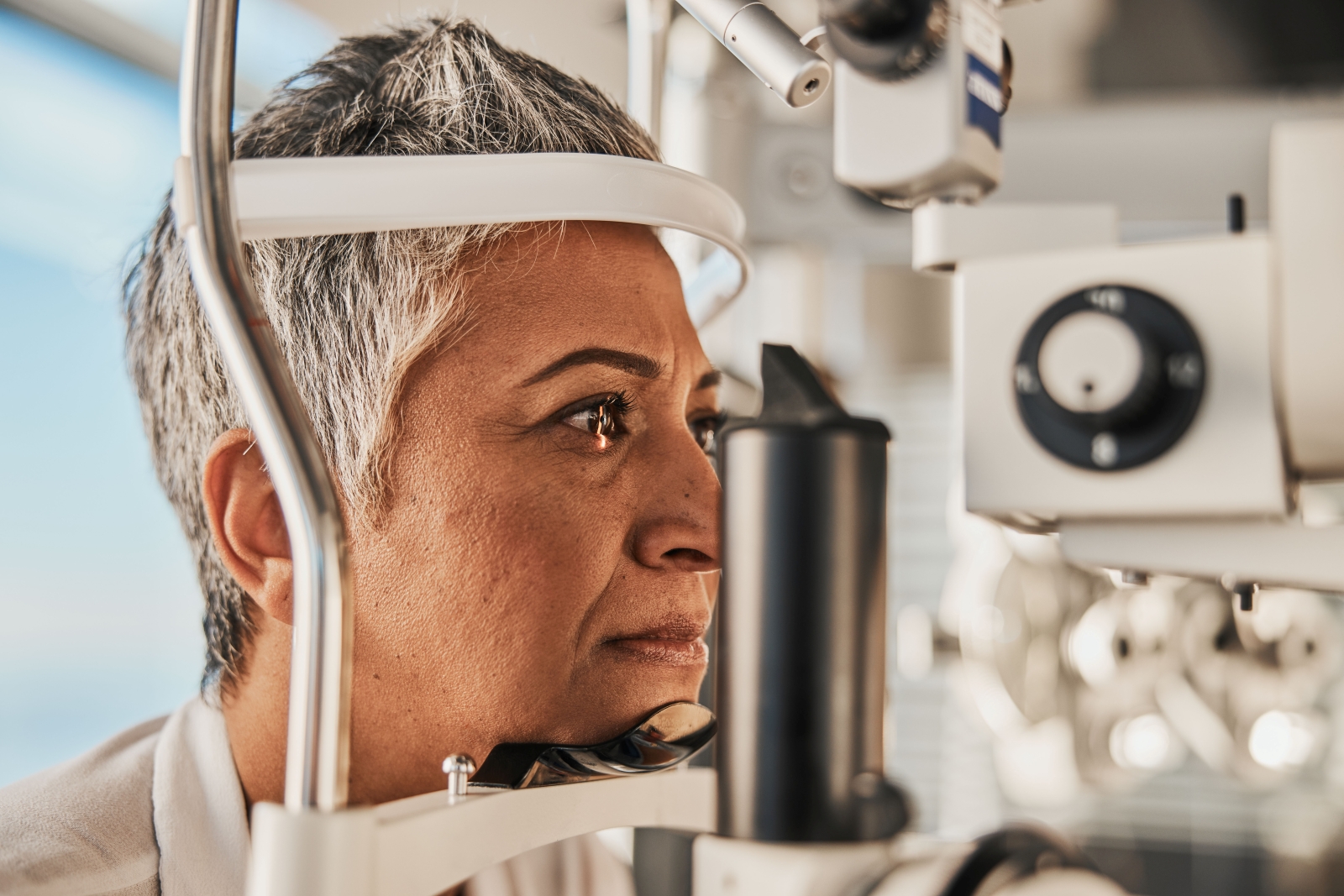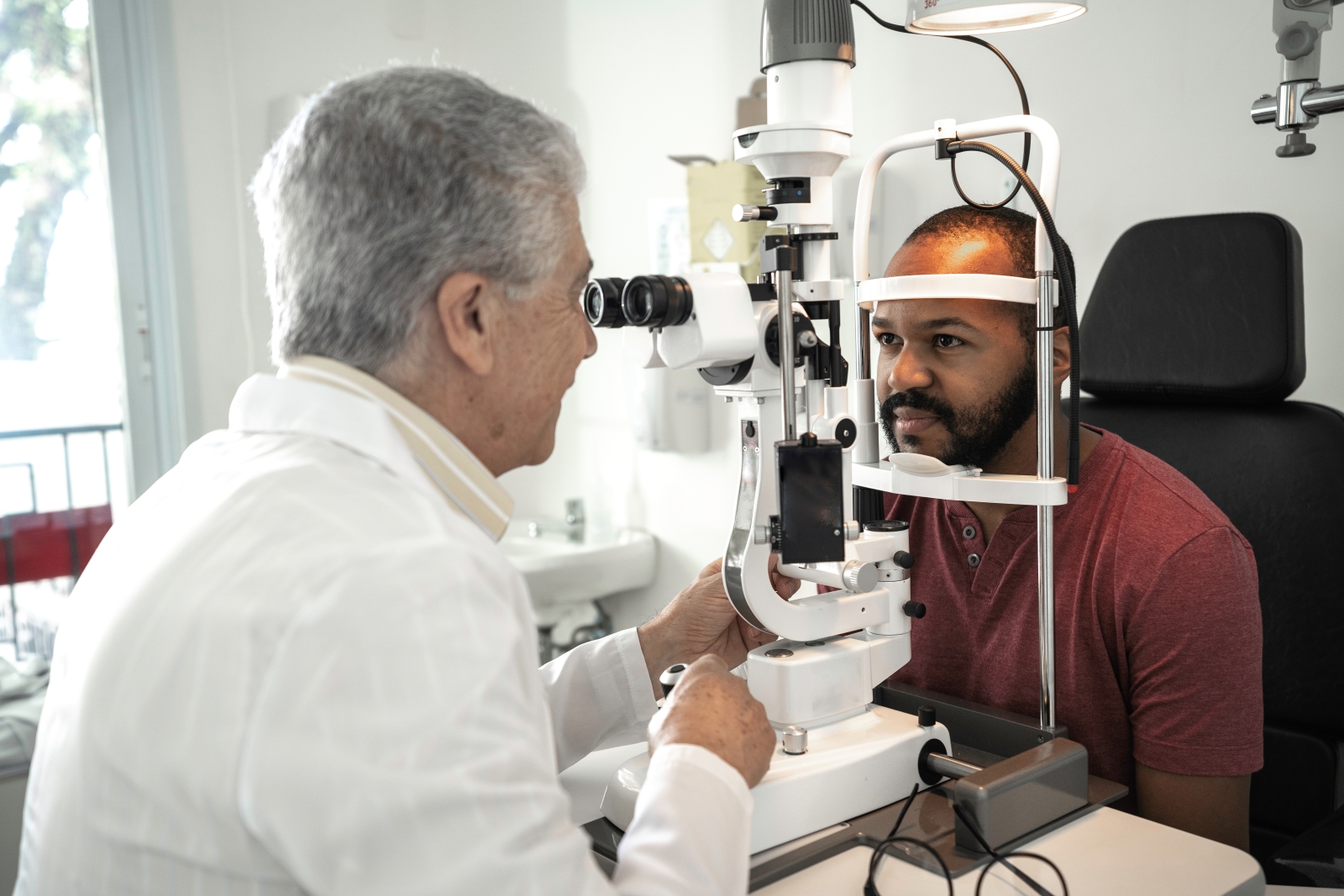Breaking ground in eye cancer research, diagnosis, and treatment
April 6, 2022

About half of all eye cancers are detected during routine exams before a patient notices any symptoms. Others may show up as slight vision changes that begin to affect your daily life. As with many types of cancer, early detection is key to treatment success.
The COVID-19 pandemic led to substantial delays and missed exams for preventive and ongoing vision care, which resulted in more eye cancers being diagnosed at advanced stages. While eye cancer is rare, with about 3,500 new cases diagnosed in the U.S. each year, if left untreated it can affect the entire body and even be fatal.
Treatment, particularly in advanced cases, requires unique expertise and a multidisciplinary team to manage all aspects of how the disease affects a patient’s life. I am fortunate to work with just such a team at UT Southwestern. We are the lead center of the National Cancer Institute-funded Collaborative Ocular Oncology Group (COOG), the largest collaborative working group in North America of specialists who treat patients with intraocular cancers.
I founded the COOG in 2007 as a multicenter research collective to determine ocular cancer biomarkers. It has steadily grown to more than 25 centers in the U.S. and Canada and has developed industry-standard clinical testing for low- and high-risk metastatic uveal melanoma.
Through continued research and collaborative patient care, we are working to improve current prevention guidelines and detection processes for all types of eye cancers.

Types of Eye Cancers
Eye cancer starts in the eyeball, the tissues surrounding it, or the nearby structures such as the eyelids or tear glands.
The most common type is uveal melanoma. This is not the same cancer that starts in the skin, although it is a distant cousin. The uvea is the middle layer of the eyeball that includes the iris, which is the colored part of the eye.
Other, less common types of eye cancer include:
- Retinoblastoma: This rare cancer, which is most common in children younger than 5, starts in the cells of the retinas, which are the light-sensing cells in the back of the eye. Retinoblastoma is especially difficult to diagnose because babies and small children can’t typically tell us if there is a problem with their vision. Parents may notice amblyopia (lazy eye) or that their child’s pupils don’t turn red in photographs.
- Non-Hodgkin lymphoma: Lymphoma is a cancer that starts in the white blood cells and can originate in various parts of the eye.
- Squamous cell carcinoma: This type of cancer starts on the surface of the eye.
Eye Cancer Symptoms
Eye cancers sometimes do not cause symptoms before the disease advances – making proactive, lifelong vision care crucial. Symptoms can include:
- Blurry vision
- Decrease or loss of vision
- Floaters (small dots or lines in your vision)
- Sensitivity to light
- Change in the shape of the pupil (the dark circle in the center of the eye)
- Growing dark spot on the iris (colored part of the eye)
- Redness or swelling in the eye
If you notice any of these signs, see an ophthalmologist right away.
Advanced treatments for eye cancer
Treatment for eye cancer may include chemotherapy, radiation, or surgery. UT Southwestern offers several therapies not found at many medical centers.
Brachytherapy
One of these is brachytherapy, a type of radiation therapy that places tiny radioactive capsules, pellets, seeds, or wires in the body temporarily or permanently to provide direct, targeted treatment. Brachytherapy can deliver a high dose of radiation to a precise area, destroying the cancer and minimizing damage to nearby healthy tissue.
Brachytherapy often can be used to treat uveal melanoma. A radioactive plaque that looks like a bottle cap is placed directly over the tumor with temporary stitches. The plaque contains radioactive seeds and remains in place for four to five days.
Brachytherapy requires a sophisticated team of radiation oncologists and radiation physicists. UT Southwestern has one of the best Radiation Oncology departments in the country with its own imaging capabilities on site. The imaging allows us to do 3D computer modeling to optimize the design of the plaque and further minimize side effects.
Intra-arterial chemotherapy (IAC)
This advanced treatment for retinoblastoma delivers concentrated doses of cancer-killing drugs directly to the affected part of the eye. We are one of only a few centers in the country to offer IAC for retinoblastoma, which requires a skilled endovascular neurosurgeon. For this treatment, we place a thin, flexible tube (catheter) into the ophthalmic artery behind the eye, where the chemotherapy is given. This procedure may be repeated several times over a month.
Reconstructive surgery
Surgery required to remove cancers that occur on the surface of the eye can cause a loss of tissue, so it’s important to have specialists who can reconstruct the surface of the eye using stem cells to support the regrowth of the tissue. We have oculoplastic surgeons at UT Southwestern.
Eye cancer care requires a team of specialists
Ocular oncologists collaborate with specialists in many other areas of medicine to provide the depth and breadth of care eye cancers require.

Throughout the course of your care, you may meet with doctors in medical and radiation oncology, oculoplastic surgery, neurosurgery, and ear, nose, and throat surgery. Biopsies of the eye are different than most biopsy specimens that pathologists see, and UT Southwestern has pathologists who are experienced in ocular pathology.
Depending on your condition, you also may visit with a genetic counselor. Certain eye cancers, such as retinoblastoma, Von Hippel-Lindau syndrome (VHL), and tuberous sclerosis can run in families. If you or a family member have one of these eye cancers, our genetic counselors can talk with you about other family members’ risks, which tests might be beneficial, and what the results may tell you.
If you or a loved one is diagnosed with eye cancer, you want a team that will care for all aspects of the disease. Consider getting a second opinion or a management plan that is developed by a large, multidisciplinary center.
For example, we offer telehealth for ongoing care. If you live far away or have difficulty traveling, we can have your test results sent securely to our experts and we can consult over a video or phone call. Some patients choose to receive follow-up care at a local health care center as we monitor remotely.
What’s next in eye cancer care
As COOG grows, we are planning for the next phase of patient-centered research.
We hope to create a network of clinical trials for patients who are at high risk for metastatic uveal melanoma to determine whether preventive medication can stave off further disease. Researchers in COOG and externally have identified several targets that the trial medication will go after, and we hope our collaborative research can identify whether one or more targets are effective.
We also are working to better understand why metastasis occurs. My lab has discovered the two most important mutations in uveal melanoma that are associated with metastasis. Now we are learning why these mutations promote metastasis so we can target those gene-level changes with specific therapies. This research requires a team effort, including specialists in cell biology and genetics.
While we are optimistic about the future of eye cancer treatments, prevention and early detection are the keys to positive outcomes. Regular eye exams are an important part of everyone’s health, even if you have no symptoms. And see a doctor right away if you notice changes in your vision or other eye problems.
Finally, if you or a loved one is diagnosed with an eye cancer, reach out for a second opinion or an evaluation at a multidisciplinary center such as UT Southwestern. Your vision is precious, and we are here to help connect you with the best care.
To get a second opinion or discuss eye cancer treatment options, call 214-645-2020 or request an appointment online.
More Articles from Our Ophthalmology Experts
Fine-tuning vision after cataract surgery with light-adjustable intraocular lenses
- William Waldrop, M.D.
June 26, 2025














